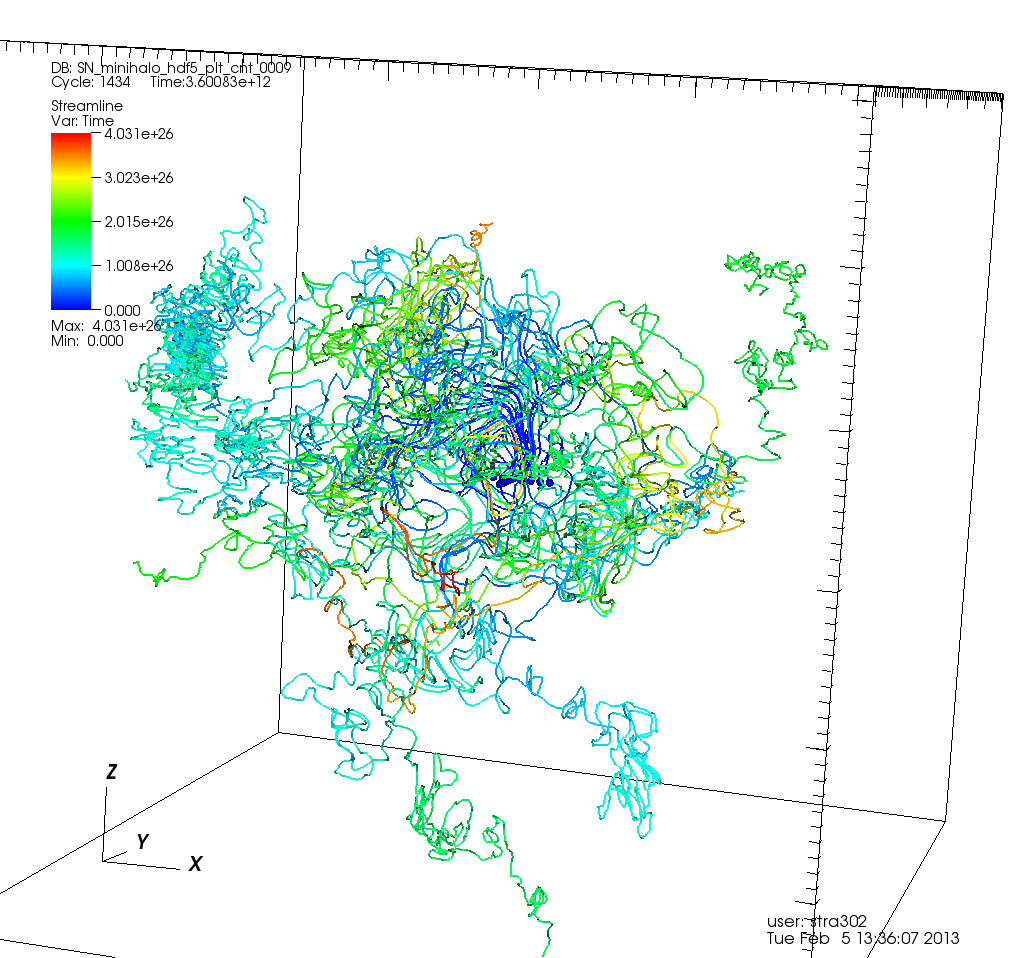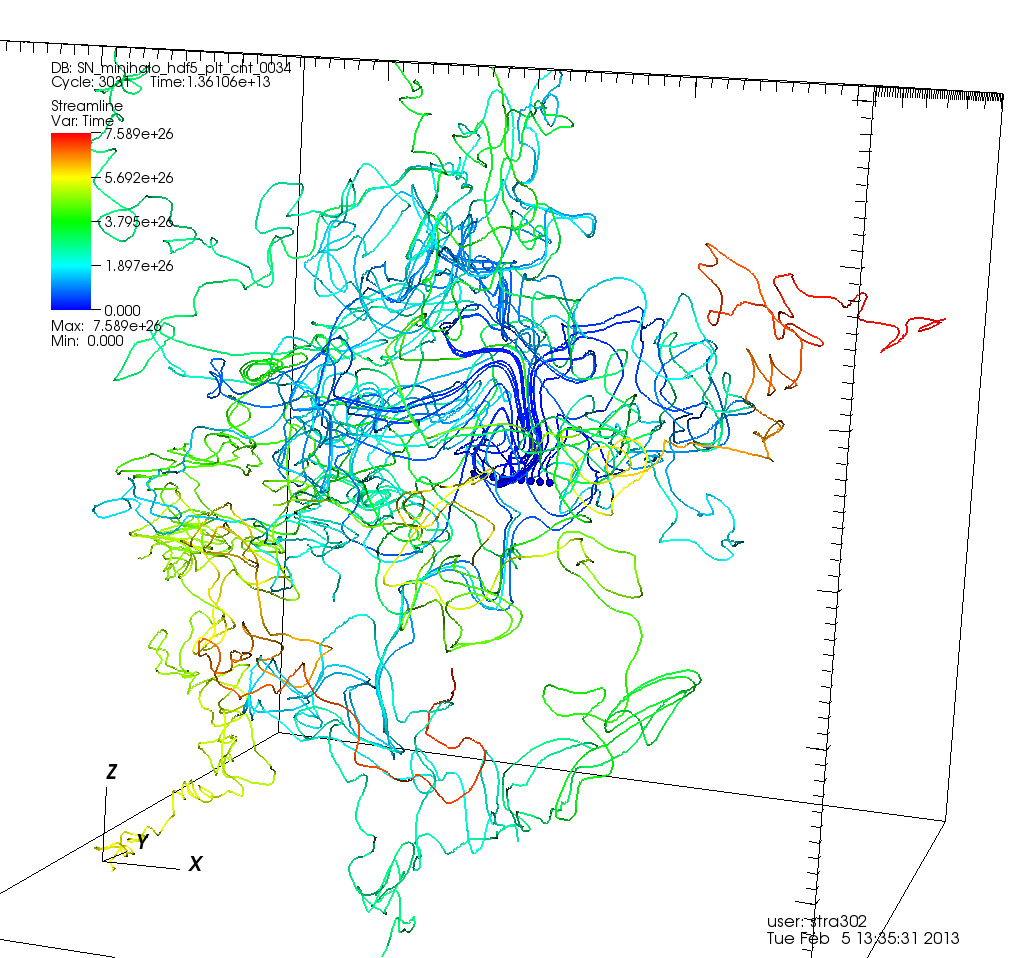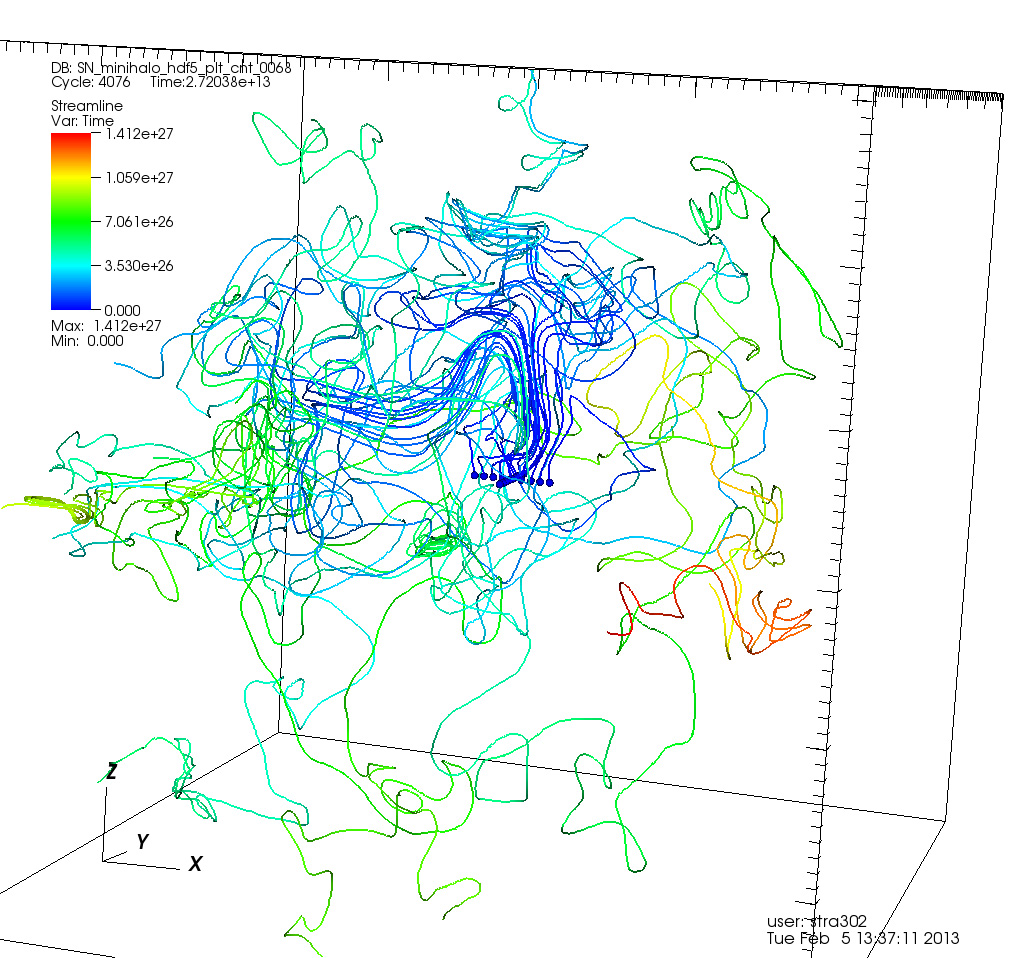ASTROPHYSICS
Magnetic Fields During Primordial Star Formation
Principal Investigator:
Robi Banerjee
Affiliation:
Hamburger Sternwarte (Germany)
Local Project ID:
hhd14
HPC Platform used:
JUQUEEN of JSC
Date published:
(Using GCS HPC resources, a group of scientist from a number of international institutes were able to prove that very weak magnetic fields can be efficiently amplified during different stages of cosmic evolution.
Magnetic fields are ubiquitously present on all astrophysical scales. They are present on planets and stars, but they also permeate entire galaxies and might exist even in voids of galaxies, so called extragalactic magnetic fields (EMF). Yet it is unclear where those magnetic fields originate from. One possibility is that they are generated very early during the course of cosmic evolution, briefly after the Big Bang. But such primordial magnetic fields are believed to be rather weak, and hence must be strongly amplified to explain the observed extragalactic magnetic fields. In principle such amplification could be due to turbulent motions of the cosmic plasma, as very simplified, analytical calculations in the 1960th have been shown. Proving the efficiency of this small-scale turbulent dynamo for the actual conditions of the Early Universe is an extraordinary numerical challenge and requires most powerful supercomputers like JUQUEEN of the GSC member centre Jülich Supercomputing Centre.
Nevertheless, a group of scientist from a number of international institutes were able to prove that very weak magnetic fields can be efficiently amplified during different stages of cosmic evolution. Based on high-resolution three-dimensional magneto-hydrodynamical simulations, it could be shown that the turbulent motions that are present during the formation of the first stars in the Universe can strongly enhance any primordial magnetic fields and might be able to influence the properties of those primordial stars. Additionally, the subsequent supernova explosions of these primordial stars are able to distribute the strong magnetic fields out of the surrounding dark matter halo and hence might be able to efficiently magnetise the intergalactic medium.



Evolution of the magnetic field structure at three different times. The expansion of a supernova remnant drags the magnetic field out of the primordial dark matter halo and might quickly magnetise the intergalactic medium.
Copyright: Hamburger Sternwarte, Universität Hamburg, Fachbereich PhysikLiterature:
D. Seifried, R. Banerjee, D. Schleicher, "Supernova explosions in magnetized, primordial dark matter haloes", Month.Not.Royal Society, 440 (2014)
T. Peters, D. Schleicher, R. Klessen, R. Banerjee, C. Federrath, R. Smith, S. Sur, "The Impact of Thermodynamics on Gravitational Collapse: Filament Formation and Magnetic Field Amplification", Astrophysical Journal Letter, 760 (2012)
S. Sur, C. Federrath, D. Schleicher, R. Banerjee, R. Klessen, "Magnetic field amplification during gravitational collapse - influence of turbulence, rotation and gravitational compression", Month.Not.Royal Astron. Society, 423 (2012)
C. Federrath, G. Chabrier, J. Schober, R. Banerjee, R. Klessen, D. Schleicher, "Mach Number Dependence of Turbulent Magnetic Field Amplification: Solenoidal versus Compressive Flows", Physical Review Letters, 107 (2011)
S. Sur, D. Schleicher, R. Banerjee, C. Federrath, R. Klessen, "The Generation of Strong Magnetic Fields During the Formation of the First Stars", Astrophysical Journal Letters, 721 (2010)
Prof. Dr. Robi Banerjee
Hamburger Sternwarte
Gojenbergsweg 112, D-21029 Hamburg/Germany
e-mail: banerjee@hs.uni-hamburg.de